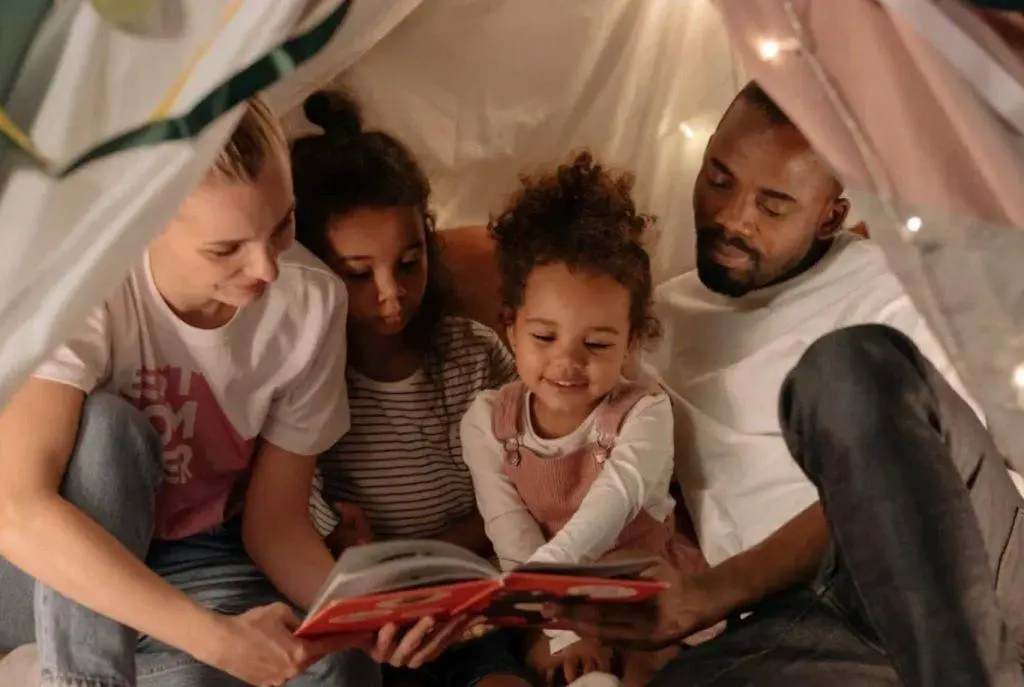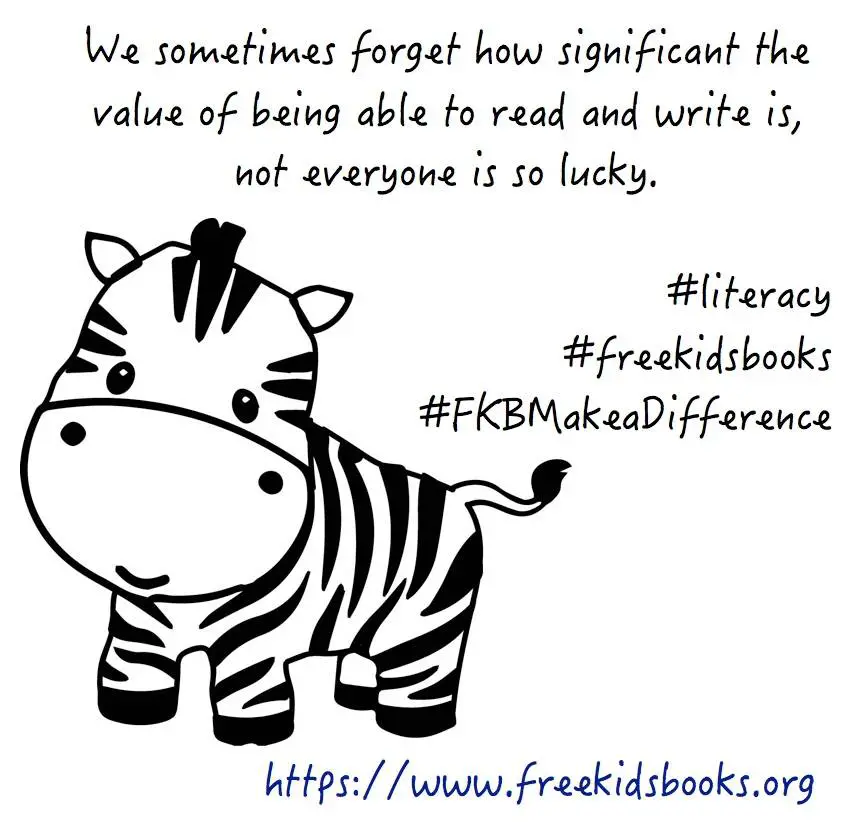 Screens dominate nearly every corner of modern life, and while they bring convenience, they can also crowd out creativity and family connection. For parents who want to slow down, weekends offer a perfect chance to unplug and rediscover the joy of shared imagination.
Screens dominate nearly every corner of modern life, and while they bring convenience, they can also crowd out creativity and family connection. For parents who want to slow down, weekends offer a perfect chance to unplug and rediscover the joy of shared imagination.
Stories, books, and simple activities can turn ordinary days into magical adventures that strengthen family bonds. Start your weekend by filling a book bag with your kids’ favorite stories for some screen-free fun. Reading together inspires curiosity, sparks conversations, and reminds everyone that the greatest worlds are often found within the pages of a book.
Why Screen-Free Time Matters
Children today are surrounded by digital distractions that compete for their attention. While technology has its benefits, too much screen time can reduce focus, limit creativity, and interfere with meaningful interaction.
Taking a break from devices allows children to engage their senses and imagination. It encourages exploration, storytelling, and problem-solving—skills that stay with them for life. When families dedicate weekends to screen-free experiences, they not only protect their children’s creativity but also create treasured memories built around real connection.
Create a Family Reading Fort
A reading fort transforms your living room into a private world of imagination. Gather blankets, pillows, chairs, and twinkle lights to build a cozy retreat that invites everyone to curl up with their favorite books.
Let the kids take charge of designing the fort and choosing the theme for your first reading session. Maybe it’s “pirates at sea,” “enchanted forest,” or “space explorers.” Add a few snacks, a flashlight, and a stack of books that fit the theme.
Encourage dramatic reading by assigning characters and voices. Parents can read narration while kids bring the dialogue to life. Once the story ends, talk about the parts that made everyone laugh or wonder. This small, simple ritual helps children view reading as an adventure instead of a task.
Plan a Story Picnic in the Park
There’s something magical about reading under an open sky. A story picnic blends outdoor play with quiet moments of imagination, offering the best of both worlds.
Pack a blanket, some fruit, sandwiches, and a few storybooks suited for your children’s ages. Picture books for little ones, short stories for early readers, and adventure novels for older kids make a balanced mix.
Find a shady spot in a park and let everyone choose a story to read aloud. Between stories, play simple games like “guess the ending” or “create a new character.” When energy levels rise, let the kids run and explore before returning to read another chapter.
To deepen the connection, bring sketchpads or journals. Encourage your children to draw a favorite scene or write an alternate ending. The combination of movement, nature, and creativity makes a story picnic unforgettable.
Host a Family Storytelling Night
Every family has stories worth telling, and storytelling night is the perfect way to share them. Set aside one evening each weekend to swap tales—real or imagined.
Dim the lights, light a few candles, and invite everyone to gather in a circle. Start with a simple prompt such as “Once upon a time, there was a creature that lived in our backyard.” Watch the story unfold as each person adds a few sentences.
Alternatively, use objects from around the house—a spoon, a toy, or a photo—and have each person invent a story inspired by that object. Encourage humor, suspense, and teamwork.
Storytelling teaches children how to express themselves and listen actively. It also reveals how wildly creative the human mind can be when it’s given freedom and attention.
Add a Creative Twist
To make storytelling night even more exciting, turn it into a mini play or talent show. Let the kids wear costumes, use props, or make shadow puppets behind a bedsheet. Parents can join in as supporting characters or as the audience.
You can even record the performances to create a “family story archive.” Rewatching old stories months later will bring laughter and nostalgia, showing how much your children’s creativity has grown.
Visit the Local Library or Book Swap Event
Libraries are havens for readers of all ages, and weekend visits can inspire lifelong reading habits. Dedicate a morning to exploring new sections, discovering authors, and participating in story hours or reading challenges.
Encourage your kids to explore topics beyond their comfort zones—mysteries, myths, history, or science. When children choose their own books, they feel empowered and motivated to read.
Check if your local community center or library hosts a book swap. Bring gently used books to exchange for something new. This teaches sharing, resourcefulness, and respect for stories as valuable treasures.
Libraries also serve as community hubs where children see others reading, learning, and engaging. Regular visits reinforce that reading is not just an activity but part of a meaningful lifestyle.
Act Out Favorite Story Scenes
Bringing stories to life through performance helps children understand character, motivation, and emotion. It also allows them to express themselves through movement and creativity.
Choose a short story, fairy tale, or even a children’s poem to perform as a family. Assign roles, create simple costumes from household items, and rehearse together. Encourage everyone to exaggerate voices and gestures—it’s about fun, not perfection.
Once the play is ready, perform it in the living room or backyard. Invite grandparents or neighbors for an audience if possible. Afterward, talk about the moral or theme of the story and how it connects to real life.
This shared creativity strengthens confidence and empathy. Children learn to interpret emotions and communicate better, while adults rediscover the playful joy of storytelling.
Make a Family Storybook Together
Writing and illustrating your own family storybook might become your most meaningful weekend tradition. It’s a hands-on project that combines imagination, collaboration, and art.
Start by brainstorming ideas as a group. Maybe your story follows a family who shrinks small enough to live inside a book, or a pet who secretly solves mysteries at night. Let every family member contribute an idea, character, or plot twist.
Once the outline is ready, divide responsibilities. Parents can help with writing sentences, while kids create drawings or design the cover. Keep the language simple and playful so even younger members can understand and participate.
Use craft materials—colored pencils, glue, stickers, and recycled paper—to decorate each page. When finished, staple or tie the pages together to create your very own homemade book.
Read it aloud as a finale to your weekend and display it proudly on a shelf. Over time, your family can build a collection of storybooks filled with memories, jokes, and creativity unique to your household.
Organize a Reading Scavenger Hunt
Turn reading into an active, problem-solving game by setting up a scavenger hunt around your home. Write clues on slips of paper and hide them inside books, under pillows, or in the backyard.
Each clue can lead to the next location using hints inspired by favorite stories. For example, “Find the book where a girl follows a white rabbit,” might lead to Alice in Wonderland. The final clue could reveal a small surprise like a bookmark, a snack, or a handwritten note of encouragement.
This playful challenge blends reading comprehension with critical thinking. It gets kids moving while keeping their minds engaged, and it’s a great way to make stories feel interactive.
Combine Reading with Art and Music
Creative expression extends stories beyond the page. After finishing a book, invite your children to paint a scene or compose a short song inspired by what they read.
Provide art supplies or simple musical instruments, and let them interpret the story however they wish. Some might paint landscapes while others turn key moments into short songs. Creativity reinforces understanding, making the story linger long after reading.
Conclusion
Weekends don’t have to revolve around screens to feel exciting or rewarding. By choosing activities centered around storytelling, creativity, and connection, families rediscover the power of imagination.
Each of these activities—building forts, telling stories, visiting libraries, or crafting books—transforms ordinary moments into unforgettable ones. The shared laughter, discovery, and creativity bring families closer together while nurturing children’s love for reading.
When screens are turned off and stories take center stage, families remember what truly matters: connection, curiosity, and the endless magic found between the pages of a book.









